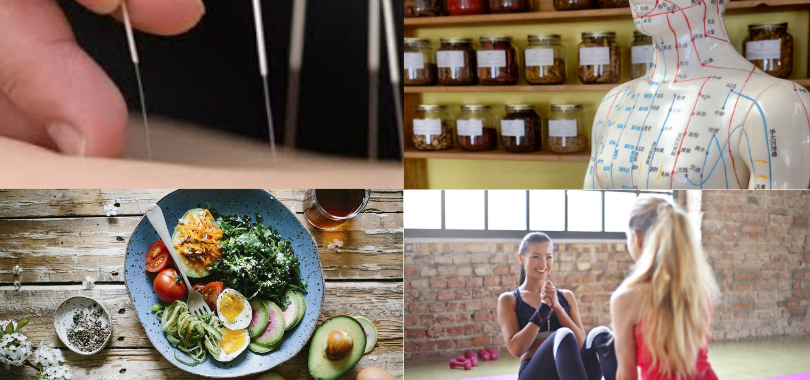One of the things I find myself saying to parents often is “Please don’t let your daughter suffer with the wait and see approach for period pain.”
The reason I often say this is because daily I get messages from parents, mainly mothers, asking if they should wait and see if their daughters pain (and other symptoms) is miraculously going to go away. Many of these young girls have been putting up with pain for months, or longer, and still many parents are using the “wait and see” approach.
Many of these messages often start with the story that their daughter is laying on the bathroom floor in excruciating pain. The stories usually add in that their daughters may also have symptoms of nausea, headaches, vomiting and even stories of these poor young girls passing out with pain.
Then there is the usual response of “I used to get period pain and associated symptoms like this and I just had to learn to live with it”
Then comes the question I always hear so often- “Do you think I should wait and see if this just goes away, or do you think I should take her to someone to have her checked out?”
I often have to bite my tongue when responding to questions and stories such as this. If my daughter was laying on a bathroom floor each month, and in excruciating pain, there is no way I would be waiting and seeing if her pain is going to miraculously disappear. The first time she had pain, I would be off doing something about it, and I would not be taking no for an answer.
Many parents suffered period pain themselves
There is always several ways to look at this and why I always offer an empathic response. Many parents were in pain themselves and went through similar experiences. Many of these same parents were told to suck it up and that this is what a woman has to put up with each month. So to them, this is reality. This is their norm. They suffered, so it is natural for them to believe that their daughter just has to wait and see and suffer it out too.
But, as I say to these parents, these symptoms that your daughter is experiencing are not normal. Period pain and all the other terrible associated symptoms are not normal. No woman, young or older, should have to put up with excruciating pains related to her cycle, or an undiagnosed gynaecological condition.
I then go on to explain that I have daughters and that there is no way I would wait and see, before getting help. I also explain that on a health perspective, there are many dangers in letting a young woman suffer such a horrible experience.
The cause of period pain could affect future fertility
I often have to explain the implications of leaving a disease and not intervening early enough. The explanation of by not getting early intervention could mean that they may not ever have grand children, is usually enough to spur many a mother into prompt action. But, it should not have to take these words to prompt someone into action.
Gynaecological conditions cause period pain
The facts are clear now. There is enough education out there. The simple fact is that period pain (and associated symptoms) is not normal and this usually means that there is an undiagnosed gynaecological condition causing the issue. One of the most common causes being endometriosis, or adenomyosis, or both combined. There could be other facts such as pelvic congestion syndrome, or worst still, though rare, there could be something more sinister such as cancer.
Sexually Transmitted Infections
The other thing that parents may not like to admit is that their daughter may actually be having sex and has a Sexually Transmitted Infection (STI). I often have parents interject when asking if a teenager is sexually active. Many a parent answer “No” on the teenagers behalf, only to then learn that their little girl is having sex.
Sexually transmitted diseases (STI’s) can cause permanent damage to reproductive organs and future fertility if not treated early enough. The reality is that many young girls, and boys, are having sex at a very young age, regardless of what parents may believe. Parents do need to open to the possibility that their child’s pain could in fact be related to being sexually active.
The things parents need to know
The things I am trying to educate all parents on are the following:
- No matter what anyone tell you, health professional included, ‘period pain is not normal’
- Please do not use the wait and see approach when your daughter is in pain, and has been for months.
- Women do not needlessly need to put up with pain each month.
- Early intervention is the key to treating and managing any disease or health issue
- Teenagers are not too young to have endometriosis, or other gynaecological issues.
- Many gynaecological issues are hereditary, so if a parent had period pain, or a diagnosed gynaecological issue, then there is a good chance their daughter will have the same.
- Parents should not feel guilty, or blame themselves for passing on hereditary issues. All of us have faulty genes.
- Regardless of upbringing, or moral stances, teenagers are having sex earlier these days
- Teenagers can have sexually transmitted diseases
- The earlier intervention is enacted and proper treatment and health management administered, the better the future fertility and health outcomes are for young woman.
- Without early intervention, some parents may never become grandparents.
- General practitioners are no gynaecologists, so please make sure you get referred onto a proper specialist. If not, find another GP.
- If you don’t get help with the first healthcare practitioner you see, please remember the value or a second, or tenth opinion.
I do get that many parent’s have been led to believe that period pain, and other associated symptoms are just part of live and something that I woman just has to put up with. I am sorry for those that were told this and then have put up with this when they didn’t have to.
Period pain is not normal
Please know that you daughter does not need to put up with these symptoms. Period pain is not normal and early intervention is the key to help your daughter live a happy and pain free life. It could really also help save her from the heartache many women have to live with daily. It could also help with her being able to have children of her own.
Do not use the wait and see approach for period pain
Never use the wait and see approach when it comes to period pain and the other associated menstrual symptoms. You daughter will thank you one day and I am sure her children will thank you too. Lead by example so that your daughter can lead by example to daughter, or daughters too.
Final word
If you do need help with your daughters period pain, and other associated symptoms, please give my friendly staff a call and find out how I may be able to help. There are in person and online consultation available. Conditions may apply with online consultations. My staff will explain all this to you when you make your enquiry, or book a consultation.
Regards
Andrew Orr
-No Stone Left Unturned
-Master of Women’s Health Medicine
-The Women’s Health Experts









